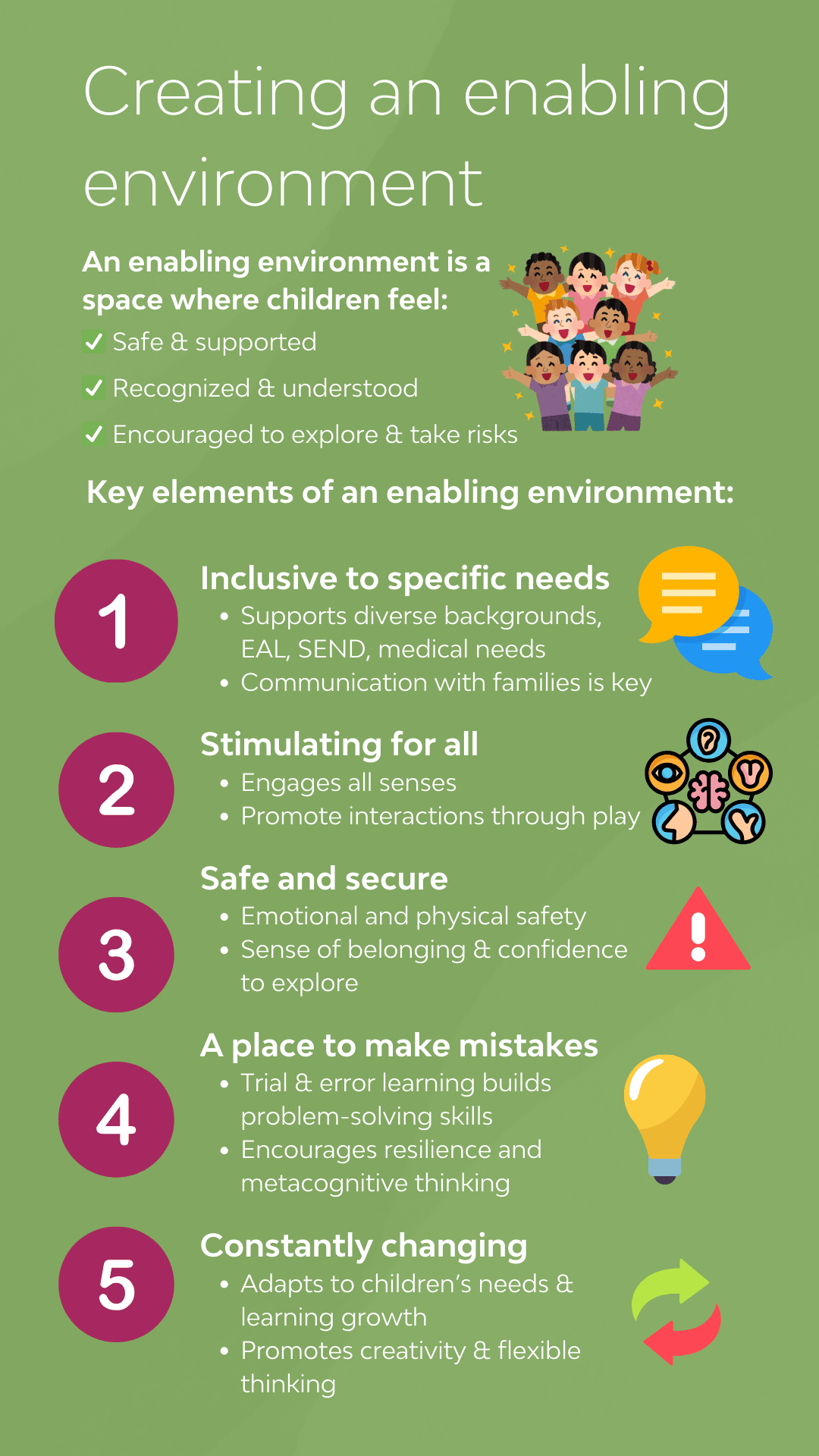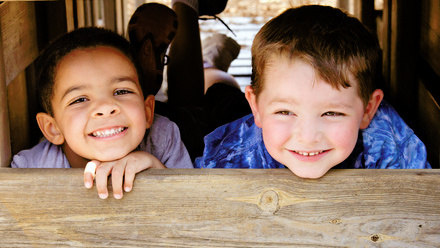Creating an enabling environment for children to thrive
Every child is different. Every child is unique. It’s a concept intrinsic to the English curriculum (Early Years Foundation Stage). But it’s a value that spans much wider than any single country and should be embraced by all working within early education and care.
To craft a culture that recognises, embraces and encourages individuality, early education and care providers must consider how the environment enables children to thrive in their own special ways.
In this article we’re going to look at what we mean by an ‘enabling environment’ within early education and care, and how we can work together to build an inclusive space for all children to flourish.

What is an enabling environment?
The term enabling environment is often associated specifically with English context and its use within the Early Years Foundation Stage, but its objectives are a form of best practice to be used with children anywhere.
When we talk about an enabling environment, we mean one that is optimised for a child’s potential, providing a safe space for children to feel recognised and understood, while allowing for risks and challenges that help them grow. By providing a reassuring environment, established on strong relationships, children are enabled to ‘bounce back’ from mistakes and know that they are safe to explore in a variety of unique ways.
Why is creating an enabling environment important?
A child’s experiences in their formative years pave the way for their entire life. Early education and care contributes enormously to these outcomes for all children, but especially those who are considered to be disadvantaged and facing additional barriers.
However, the ability to have such an influence on children’s outcomes in their early years is largely down to the approaches we take and is why creating an environment that is inclusive and enabling for all is so important to giving every child the best start in life.
An effective enabling environment is…
Inclusive to specific needs
An enabling environment helps every child, so it is vital to recognise individual needs and accommodate them so that every child can flourish in the space.
This might include practices to support specific backgrounds, such as children using English as an Additional Language (EAL), children with Special Educational Needs and Disabiliteis (SEND), or specific medical requirements. But, as with all circumstances, unique experiences call for unique support, so it’s an important part of the process to communicate with families to find out how to create an enabling environment for their situation.
Stimulating for all
We learn best when our minds are active and engaged. Activities should provoke inquisitive thinking but also build on current interests to promote interactions through play.
Stimulating environments engage all the senses and allow children to explore using their whole body. However, it is important to balance this well so as not to overwhelm everyone.
Somewhere safe
Children thrive in environments they feel secure in, with a strong sense of belonging and understanding of their value in the environment.
From a practical perspective, this means ensuring children can take risks and explore without getting hurt, such as using soft flooring to encourage physical activity across all areas of the environment.
From a social and emotional perspective, establishing secure attachments in a safe environment is about valuing children’s voice and cultivating a sense of belonging for everyone. By building confidence for children to explore at their own pace and learn with others, early education and care provisions allows children to appreciate their own, and others,’ individual skills and know that they are in a safe space to grow together.
A place to make mistakes
Mistakes are meant to be made!
This is such a valuable sentiment to develop within early education and care environments to allow children in their ability! By making sure children know that it is okay to get things wrong, we are encouraging them to progress and learn by figuring things out exploring through trial and error – finding what works by knowing what doesn’t!
Enabling environments are also spaces in which we learn about different ways to do things, creating teachable moments to understand that things aren’t always black and white, right or wrong. This is not about recognising when things do not work, but creating moments to discuss learning in different ways and strengthening metacognitive thinking for reflecting on what went well and how we can change things for the future.
Constantly changing
Finally, an enabling environment is dynamic and ever-changing! Children are constantly learning, and early education and care professionals hold a special responsibility for extending learning opportunities and supporting children to thrive in their own ways.
Continuous provisions can be developed and extended to consolidate and extend learning by adding new provocations to open-ended areas of play. This encourages creative thinking, which enables children to explore opportunities in new ways, adapting to stimuli daily.
Key takeaways
Early education and care settings are a special place for everyone and should aim to support all children reach their full potential. Creating an enabling environment is essential. Enabling children to learn and grow in a space they feel safe, supported and satisfied is key to this success for children, their families and professionals.
Why not check out some of our inclusive partnerships resources to learn more about supporting specific groups?






